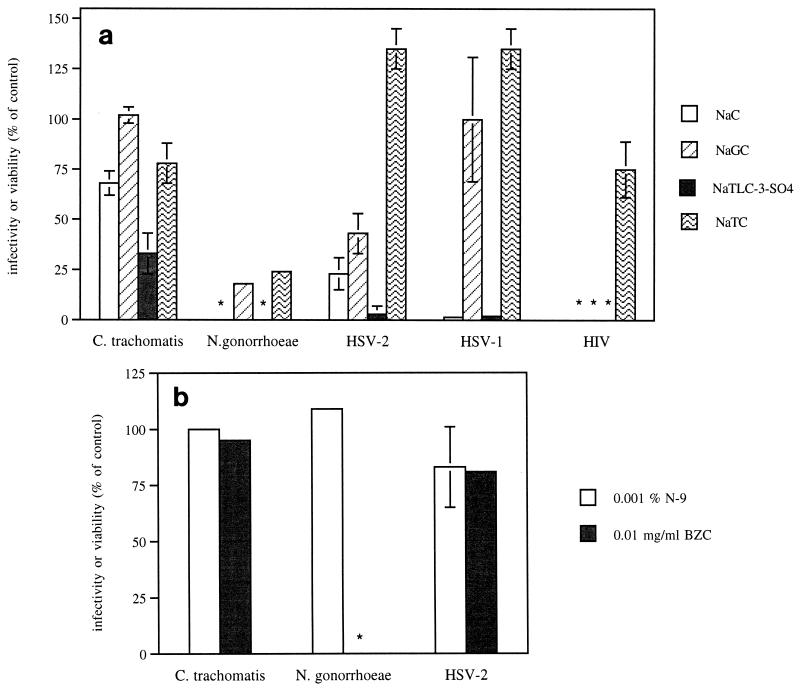FIG. 1.
Effects of bile salts at a concentration of 1.0 mg/ml (a), N-9 at a concentration of 0.001% (b), or BZC at a concentration of 0.01 mg/ml (b) against microbial infection. For chlamydia, the results are presented as the number of inclusions formed in the presence of compound as a percentage of the number of inclusions formed in the absence of compound. Each point is the mean of values obtained from at least two independent experiments performed in duplicate. For gonococci, the results are presented as the number of viable gonococci found in the presence of compound as a percentage of the number of gonococci found in the absence of compound. Each point is the mean of values obtained from two independent experiments performed in duplicate. No viable gonococci were observed on the plates containing 0.01 mg of BZC per ml or 1 mg NaC or NaTLC-3-SO4 (∗) per ml. For HSV-2, results are presented as the number of PFU per well in the presence of compound as a percentage of the number of PFU per well in the absence of compound. For HSV-1, results are presented as β-galactosidase expression (absorbance at 410 nm) in the presence of compound as a percentage of β-galactosidase expression in the absence of compound. Each point is the mean of three to five experiments performed in duplicate with primary cells obtained from different patients. For HIV-1, results are presented as syncytia observed on day 3 of infection in the presence of compound as a percentage of syncytia formed in the absence of compound. Each point is the mean of two experiments performed in quadruplicate. ∗∗∗, no syncytia were observed after NaC, NaTLC-3-SO4, or NaGC treatment at concentrations as low as 0.1 mg/ml. The error bars indicate standard deviations.

